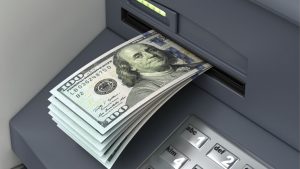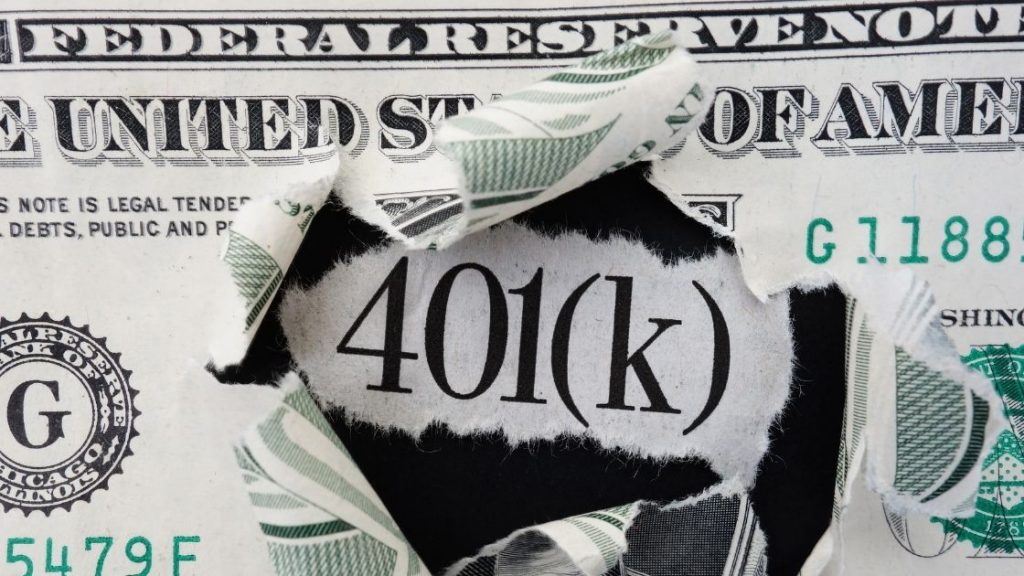If you are here, you are probably already familiar with the FIRE movement, which stands for Financial Independence, Retire Early. FatFIRE is a type of FIRE, but with the goal of having a luxurious retirement to boot. It’s a tall order.
Many people seeking to achieve leanFIRE (which is retiring early with a frugal lifestyle) shoot for an annual income of around $40,000 per year. That means having $1 million in assets to generate that $40,000 per year (assuming you are going by the 4% rule, which is considered the safe withdrawal rate by many financial advisors).
If you are going to fatFIRE, you want multiples of that income. If you live in a low cost of living area, you can probably fatFIRE with around $200,000 of annual income. If you live in a high cost of living area, you may want to double that.
Of course, different people have different ideas of luxury and the numbers will vary if you are an individual vs. a family, but, on balance, I think these are pretty good benchmarks.
Either way, that’s a lot of income! But to make things even harder, you need this income to be passive. Remember the “R” in FIRE stands for retire. You are not retired if you are working for that income.
So how in the world do you do this?
It’s certainly not easy and it won’t happen overnight, but we’ve got 5 great strategies that can help you get there. We will cover each of these strategies in detail below, but here’s a preview:
5 Strategies to fatFIRE Fast:
- Start a Passive Income Business
- Buy Alternative Income-Producing Assets
- Get a High Income Job
- Aggressively Save and Invest
- Use Debt to Magnify and Accelerate Returns
It’s a lot to cover, so let’s dive into it!
The information contained in this post is for informational purposes only. It is not a recommendation to buy or invest, and it is not financial, investment, legal, or tax advice. You should seek the advice of a qualified professional before making any investment or other decisions relating to the topics covered by this article.
Start a Passive Income Business

One realistic way to create a source of passive income that will generate enough money for you to fatFIRE (and do so in a reasonable timeframe) is to start or buy a business.
Why Are Businesses So Effective As a Way to FatFIRE?
First, they generate really high income relative to their cost. It is not unusual at all to find businesses that cost $600,000 generating $200,000 in cash flow (which is basically how much money is left as owner profit after all operating expenses).
Just go on bizbuysell.com and check out some businesses in that price range. Not all businesses will provide that level of cash flow, but plenty will.
Now compare that to how much money you would need if you followed the 4% rule. To get the same $200,000 in income, you would need $5 million!
Second, some businesses have built-in advantages when it comes to being run passively.
One great example is laundromats. Machines do the hard work of washing and drying the clothes. Same thing goes for in-bay automatic car washes (in fact, you see them unattended all the time at 24 hour gas stations). Delivery routes can also be a highly profitable way to earn passive income (but you have to hire the right people to do the deliveries).
I have written detailed step-by-step guides on how to start (or buy) these types of passive income businesses. Just click on the links below if want to learn more.
- Laundromats for Passive Income
- Automatic Car Washes for Passive Income
- FedEx Routes for Passive Income
- Bread Routes for Passive Income
Buy Alternative Income-Producing Assets
Buying a business is great because you can make a lot of passive income very quickly. But if you are short on cash and can’t afford to buy an entire business right now, you can still get started on your fatFIRE journey by buying the right alternative assets.
Below are 8 great alternative assets that you can explore to help you fatFIRE fast.
Rental Properties

This strategy is the single biggest contributor to my wealth, so I will devote a bit of time to it. I have been investing in real estate for some years now and currently own nine investment properties.
In my case, I had to put around 20% down, but these days lending requirements have loosened and you only need to put 15% down.
Why are rental properties perfect for an accelerated fatFIRE strategy? They combine two essential features: (i) high ROI; and (ii) passivity.
Let’s tackle ROI first. A lot of people criticize real estate investing because they say it underperforms the stock market. Now, I have nothing against the stock market and have a large portion of my money invested there, but I think this claim of underperformance is just not true when you factor in leverage.
Here’s an example showing the incredible power of using leverage to buy rental properties:
Nathan has $100,000 and buys 6 rentals. Each is worth $100,000 and he puts a 15% down payment ($15,000) on each of them. He has $10,000 left as a cash reserve in case he needs to cover repairs or other expenses with his rental portfolio.
The aggregate mortgage is $510,000. The aggregate value of the properties is $600,000.
Let’s assume a mortgage rate of 3.5% (which is actually above market as of the time of this writing) and an appreciation rate of 3.7%, which is the rate of appreciation for average home values over the past 20 years.
At the end of 10 years, the rentals are worth $862,857 and he owes $394,877 on the mortgages . If you subtract the mortgage from the value of the rentals, that’s $467,980 in equity.
And the gains in equity do not take into account all of the “cash flow” he has been receiving on his rental properties for 10 years.
Definition Detour: “Cash flow” is basically income minus expenses. So in the context of rentals, you have positive cash flow if your rental income exceeds your expenses (e.g., mortgage payment, taxes, insurance, HOA, etc.).
For my properties, I see between $100 and $200 per property in cash flow each month.
Going back to our example, if Nathan made $150 in cash flow each month for each rental, he would have collected $108,000 over ten years. And let’s not forget that he may benefit from depreciation and other deductions that could shelter his rental income from taxation.
So if we add his $467,980 in equity with his $108,000 in cash flow, he has $575,980. That’s all starting from his initial investment of $100,000 (*actually $90,000).
This works out to an annualized return of 20.4%. Imagine if he had invested that $108,000 in cash flow into the stock market or into real estate again to further enhance his returns?
I think you get picture: Real estate can yield amazing returns even using modest assumptions because of the power of leverage.
Rental Properties Can Be Passive
The second piece of the puzzle is passivity.
Rental properties can definitely be semi-passive, even if you self-manage. I self-manage all of my properties and they are relatively hassle-free at this point.
I have a team of contractors that I call whenever one of my properties needs attention and they take care of it. When a lease expires, I have someone ready to touch-up the property. I have a mostly automated process for filling vacancies when they arise.
Of course, the rentals are not completely passive even with these measures in place, but I don’t spend much time or energy managing my properties at this point.
I’d say I devote on average about 3-4 hours per month to my rentals. Most months, it is less than 1 hour (I love it when things are quiet!). When vacancies arise, it can be more than 10 hours per month because I like to do my own showings for prospective tenants.
Related Reading:
If you want to learn more about how to get started in rental property investing or want to find out how I automate my rental property business for passive income, I have written in-depth articles tackling both topics. I also wrote an article on how to reduce vacancies so you can maximize your profit. Check them out below.
- Step-By-Step Guide on How to Get Started Investing In Real Estate
- How to Automate Your Rental Property Management
- Best Ways to Reduce Vacancies
Real estate is a terrific way to get on the path to fatFIRE, but let’s switch gears to some other great income-producing assets that may be more affordable (and thus easier to get up and running).
Blogs

No list of passive income strategies would be complete without blogging. The strategy is simple. Buy an existing money-making blog and collect checks.
Starting a blog is a lot of hard work and it takes time to make money, but buying one that has all of the articles written and is producing steady income can be a perfect way to get a nice passive income stream.
Given how blogs are priced (usually with prices ranging between 25-40 times monthly net revenue), you can buy a blog for $10,000 that generates between $3,000 and $4,800 per year. That’s between a 30% to 48% ROI!
If you want to learn more, check out my article on Buying a Blog for Passive Income.
If you don’t have the funds to buy a blog right now and don’t mind putting in the work to start one, check out my article on How to Start a Blog From Scratch.
I cover all of the key areas you need to know, including how to set up your website and most importantly, my best tips for writing great articles, getting traffic to your blog, and monetizing that traffic.
Now buying a money making blog can be expensive (especially if you want one that makes real money), so if you want a nice middle option, you can hire a service to create a website for you. Make Lemonade is a UK based firm that specializes in this.
I have used their content writing service to help me expand my blogs when I was running short on time, but they do offer a full service model, where they will create your website for you from start to finish and include content that has gone through their rigorous keyword research process.
Check them out here if you want to learn more.
Cars

You can buy a car (with 100% financing in many cases if you qualify) and rent it out on car-sharing platforms like Turo or Hyrecar. You can do this as a side gig on the weekends and keep it pretty low-key and hassle-free.
Or you can scale this strategy and wind up with a fleet of cars. When I search for cars on Turo in my area, I see owners who have 20 or more cars for rent, so it’s definitely doable.
How to Rent Out Your Car to Make Money
Extra Storage Space

You can rent out your extra storage space (basements, garages, bedrooms, even closets) on platforms like Neighbor. What an incredibly passive way to get extra income! Even if you don’t have extra space now, you can buy a shed or other storage structure on your property to rent it out for profit.
How to Rent Out Extra Storage Space For Passive Income
ATM Machines

Did you know that you can buy ATMs and set them up at various locations to make passive income? Every time someone uses the ATM, you will get a fee. Occasionally, you will need to restock the machines with cash (which you can outsource to companies that handle this), but there’s no inventory, customers or employees to manage.
Can be a pretty nice passive income set-up.
Vending Machines

You can also buy (and finance) vending machines and set them up in high-traffic locations. As with ATMs, you will need to restock them from time to time, but that can be outsourced. I know people who make over $100,000 per year with this strategy.
Vending Machines for Passive Income
Inflatable Bounce Houses

The great thing about bounce houses is that they are relatively affordable to buy (especially used ones, which can be bought for less than $1,000) and they are easy to set up and disassemble (making it easy to outsource the work-intensive part of the business).
Plus, it is easy to do this on the side (just schedule appointments on the weekends or when it suits you).
Bounce Houses for Passive Income
Billboards

This is another asset that can generate some solid passive income for you. Finding a suitable location is key here – there are a lot of legal restrictions on where you can place billboards.
Get a High Income Job
If you have a high paying job, achieving fatFIRE will be much easier for you. I hang out at the reddit forums on fatFIRE a lot and know that many have successfully fatFIRE’d by working as software engineers at FAANGs (stands for Facebook, Apple, Amazon, NetFlix and Google). Others are doctors, lawyers, bankers, and other highly paid professionals.
If you want to fatFIRE and are still young, you should absolutely take into account the earning potential of your career path.
Bottom line: The more you make at your job, the more you can set aside. And having a lot of money to save and invest is essential if you are going to fatFIRE. On that note, let’s jump to the topic of saving and investing
Aggressively Save and Invest

It goes without saying that if you spend everything you earn, you will never get off the work treadmill. The only way to fatFIRE (or FIRE at all) is to save and invest enough money so that you can generate passive income from your assets.
To be at the fatFIRE level, you will need a lot of income-generating assets. That means saving and investing at a very aggressive pace. The sooner you want to fatFIRE, the more aggressive you need to be.
If you have a high income job, doing this is radically easier. Someone who makes $400,000 per year can save $100,000 without too much fuss. But if you make $100,000 per year, saving all of it is just impossible.
What should you invest in?
Most people will invest in run-of-the mill securities like stock and bonds (either through their 401(k), IRA or taxable brokerage accounts). I think you know the types of assets and businesses I prefer (we just covered them).
But If you are not going to be purchasing passive income businesses or income-producing assets like we talked about earlier, try to maximize your returns with your regular stock investments.
If your employer offers free money, like matching contributions to your 401(k), take it. If they have a Employee Stock Purchase Plan (which often allows you to get stock at a discount), take advantage of that as well. Does your employer have a Health Savings Account? Most people just keep that money in cash, but you can use HSA funds to invest in securities and boost your return.
Want to learn more about how to do each of these things? Check out my articles on these topics below:
Use Debt to Magnify and Accelerate Returns
Most financial advisors will tell you that debt is bad. And in many cases, that’s true. If you are barely making ends meet because of credit cards or student loans, then you need to address that.
But if you are in a situation where your personal debt is under control, you can use debt as a potent wealth-building tool. It acts as a lever and an accelerant that allows you to make more money faster.
Here’s an example to illustrate the point:
If you have $100, you can buy an investment that costs $100. If that investment makes 10% in one year, you will have $110 at the end of that year.
But if you have a $100 and use that as a down payment or a source of collateral to buy an investment that costs $1,000 and that investment generates the same 10% return, you now have $200.
That’s a 100% return vs. a 10% return.
It’s an oversimplified example, but I use it to show how someone who understands and uses debt in the right way can magnify their returns.
You can use debt to amplify and accelerate your returns for any of the strategies I outlined earlier. It certainly can be used with great effect for real estate investing, buying businesses or income generating assets. It can even be used to boost returns on securities through the use of margin accounts.
Want to learn more? Check out my in-depth article on how to use debt to create passive income streams.
Word of Caution: I have to issue a very clear warning here. Just as debt can accelerate and magnify your earnings, it can also accelerate and magnify your losses.
If you borrow to purchase any income-producing asset and that asset underperforms (or doesn’t perform at all), you may be in trouble. More trouble than if you had bought the asset without using debt. So carefully consider the risks and benefits of using debt to create passive income streams before taking the leap.
Conclusion
In my opinion, fatFIRE is the ultimate achievement when it comes to personal finance. Not only are you among the very few that can retire early, you get to do it like an absolute boss.
Obviously, it’s not easy to fatFIRE (which is why so few people can do it) but I hope the strategies we covered give you some useful ideas to help you obtain this coveted achievement.

